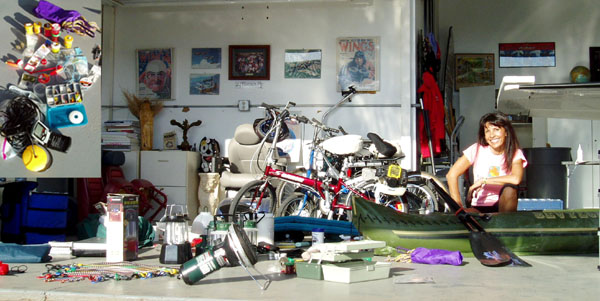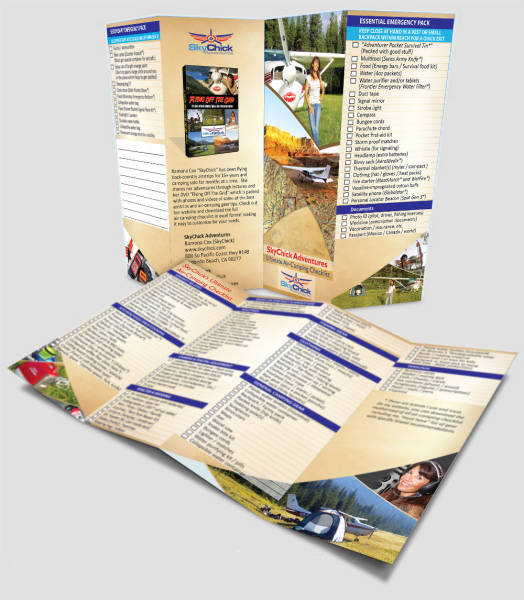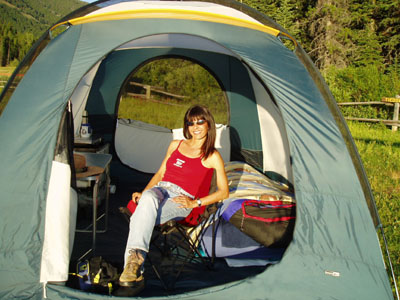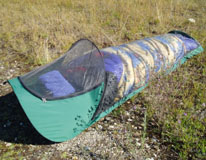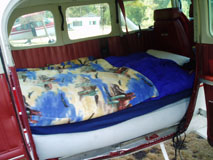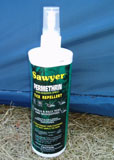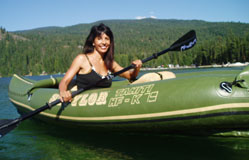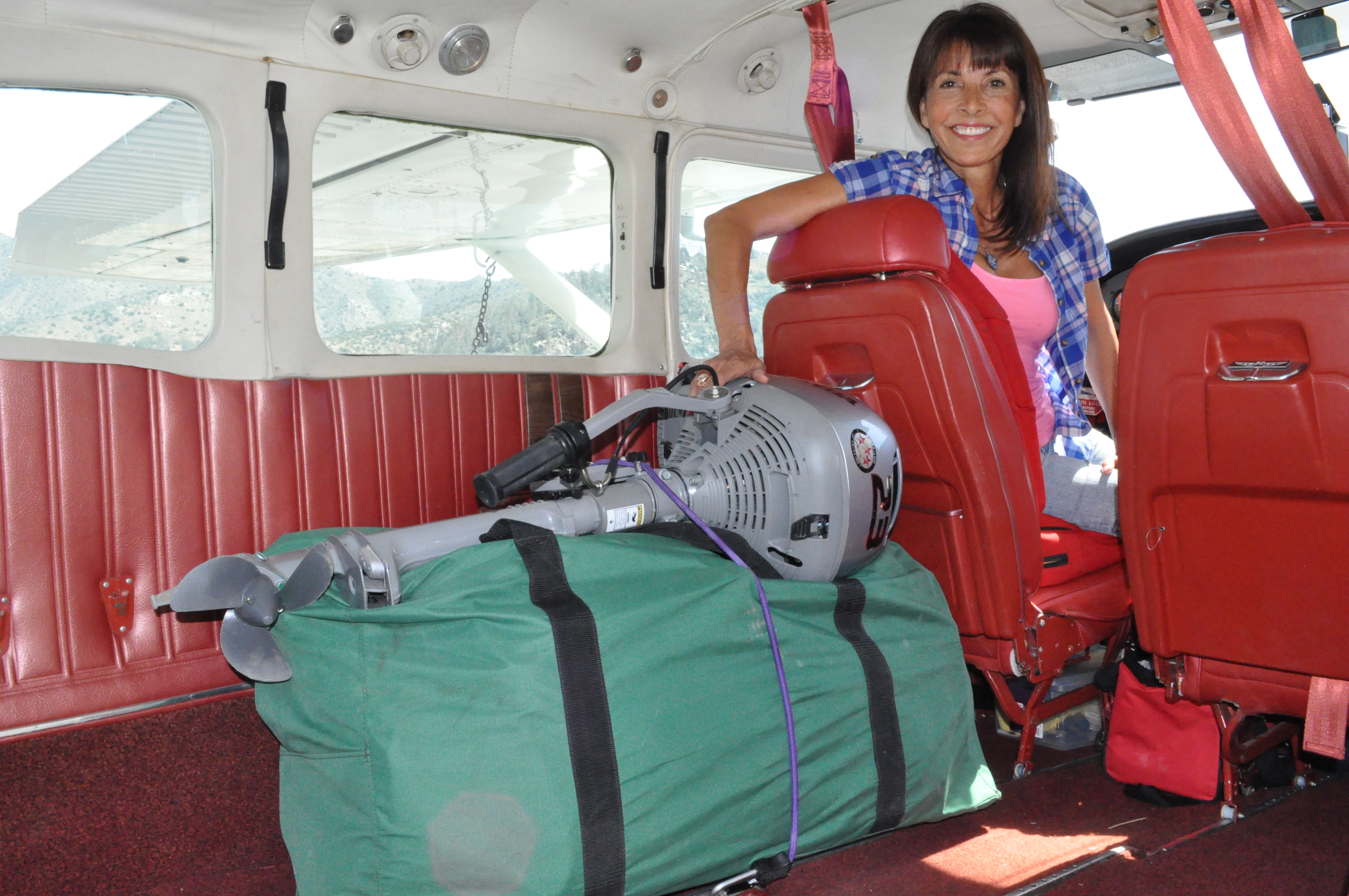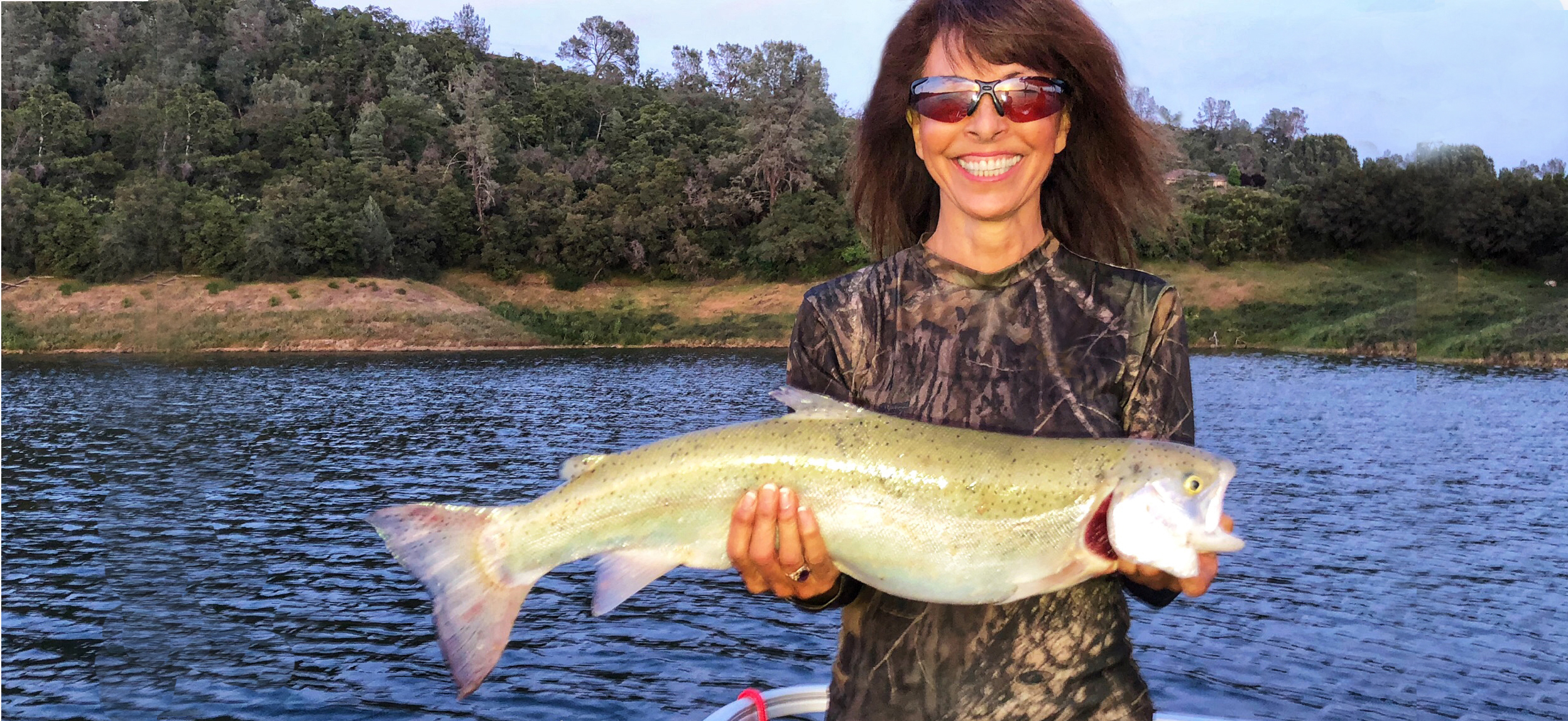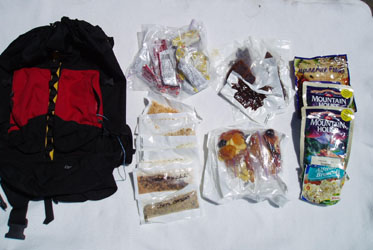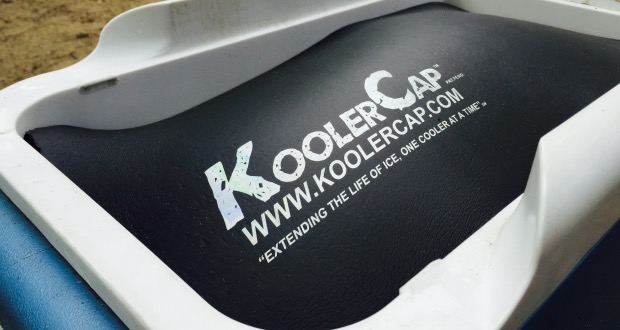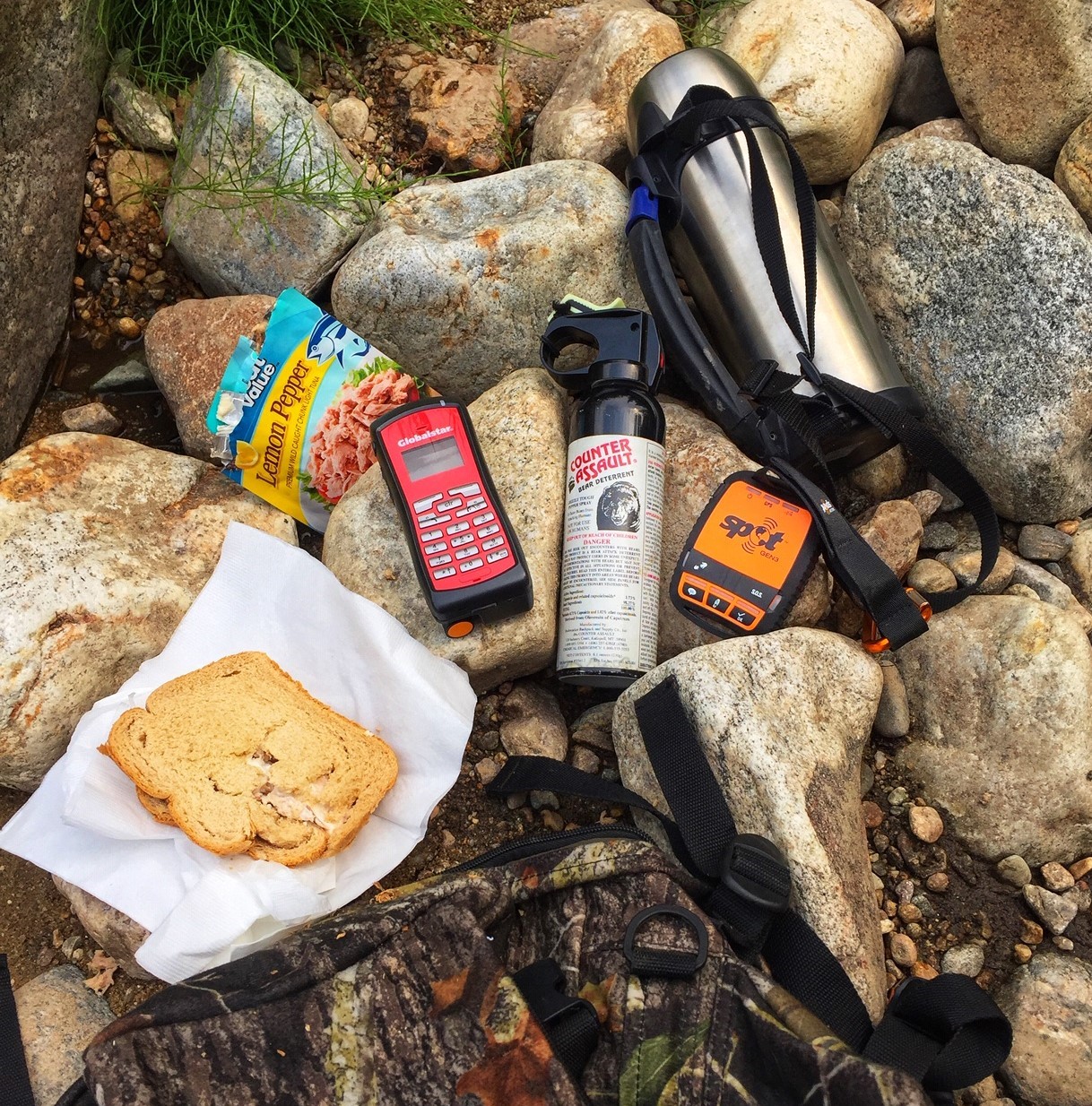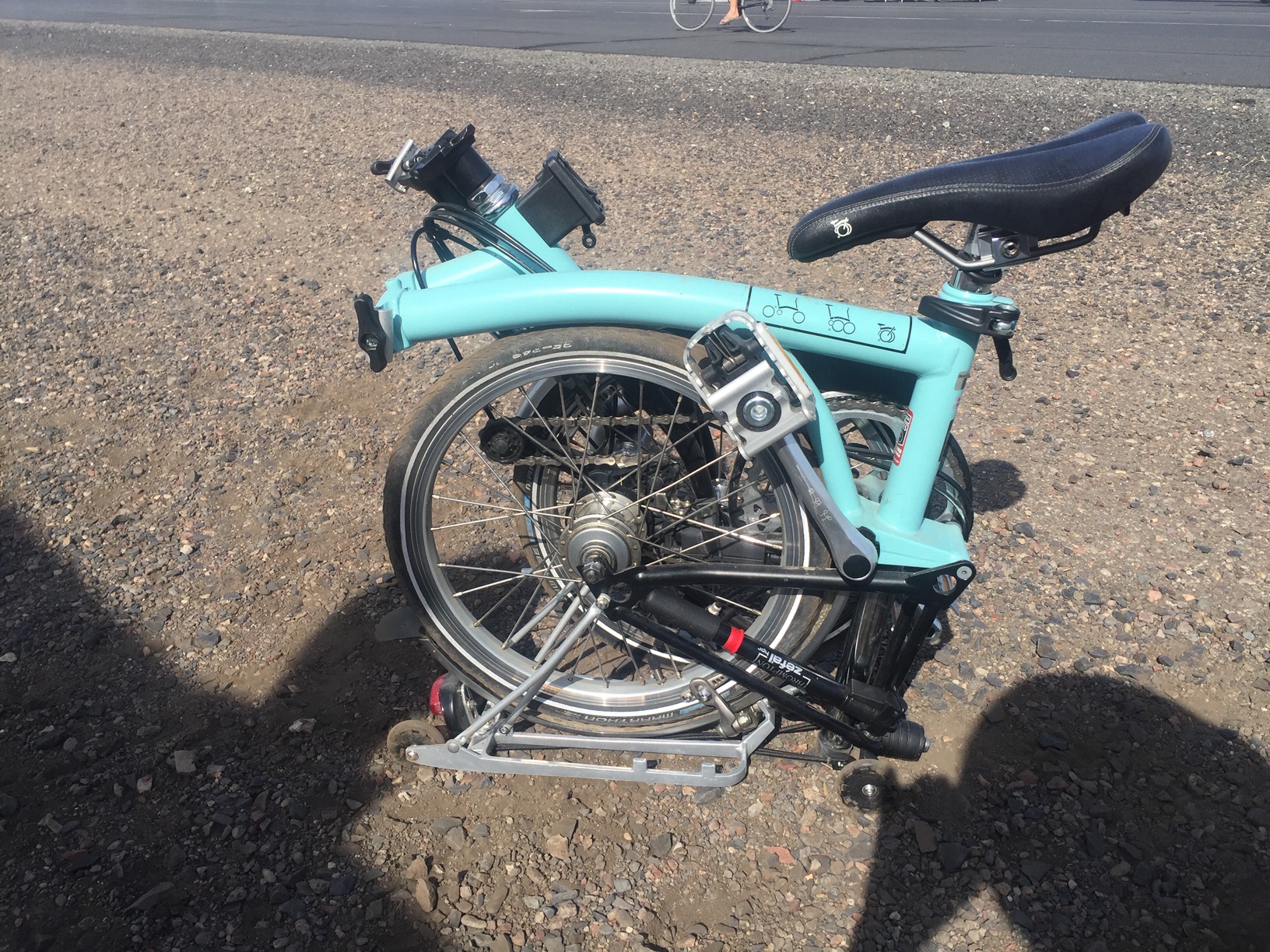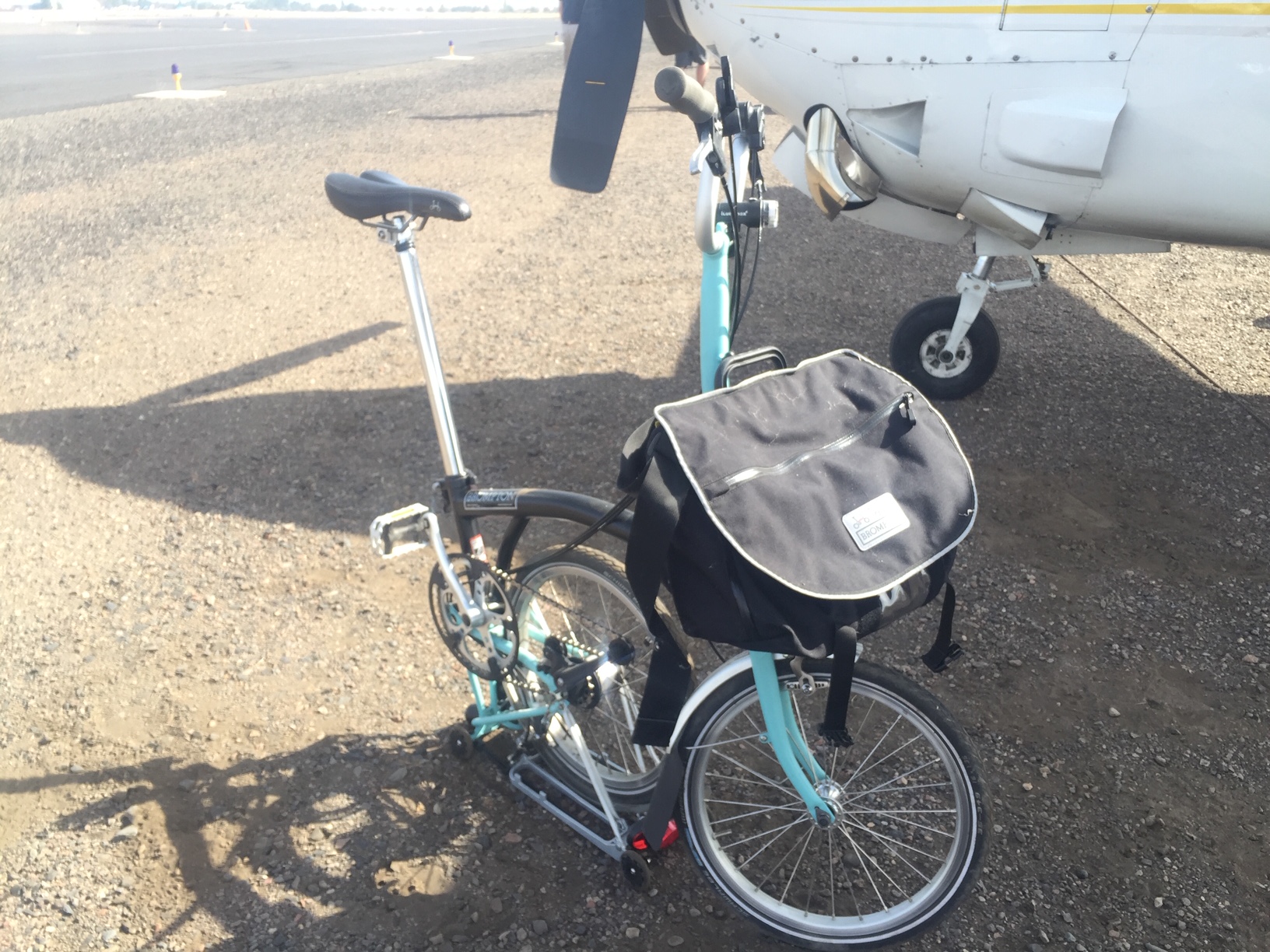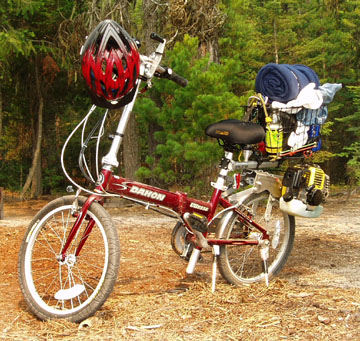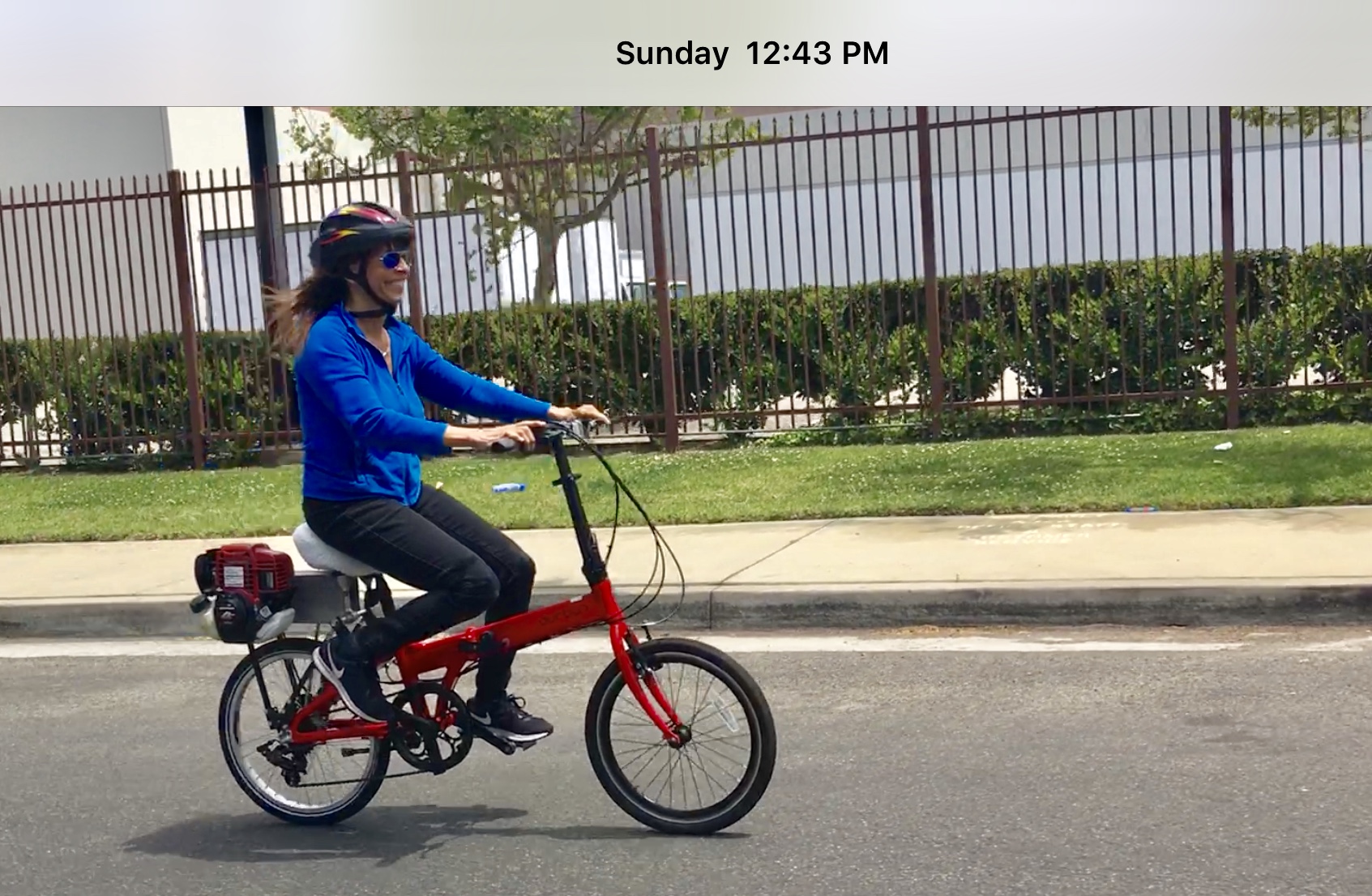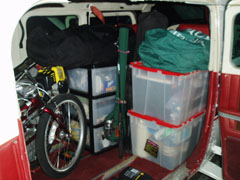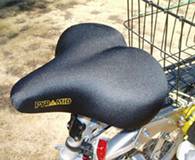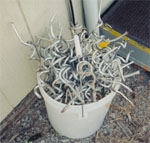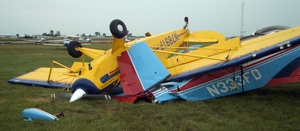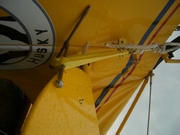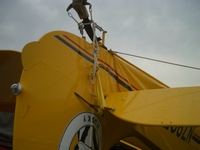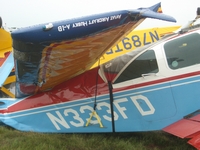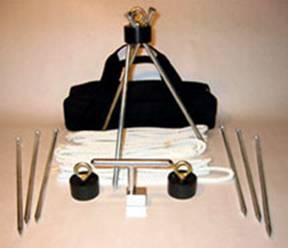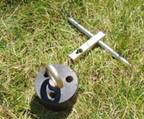Decisions, decisions...
As a 16-year gear reviewer, I love checking out new gear. My lectures are called "What's Right and What's Hype" because I call it like it is.
Stay tuned as I add innovative and functional products to this section and just as I created the first-ever "Ultimate Air-Camping Checklist" for pilots, I'll be using the same principals to create a valuable checklist for the RV community and make it available for FREE to all those who have signed up to my email list. I will also be showcasing my own Lance 1575 Travel Trailer which was customized with some never-before seen items that RV'ers will surely enjoy. I welcome input from fellow campers and hope you'll share your favorite gear with me so I can try it out and share it with our fellow outdoor enthusiasts.
Thanks Dad for taking me camping!
As a child, my parents introduced my brother and I to camping and I've loved it ever since. I started solo back-packing in my early 20's and would spend a week or two hiking in the Sierra Nevada mountains of California. Then, a friend let me borrow his Volkswagen Westfalia pop-top Van for week long trip and I bought it from him the moment I returned. Then, years later, I started flying and was introduced to "back-country" air-camping and was instantly hooked. I realized that I could land and camp at remote dirt or grass airstrips in wilderness areas and get to them much faster than by foot or car. And I decided to do a "Fly-About" (which is the aerial version of the classic Australian Walkabout). So I left for four months which included a combination of aerial and ground exploration and remote forestry airstrips.
On this extended adventure (which I continued to do for many summers), I've had the opportunity to check out gear for months experiencing everything from mild to INTENSE environments.
In a nutshell, that was the start of SkyChick Adventures. Through word of mouth, people heard about my flying adventures landing around the country solo for entire summers and hanging out with grizzly bears and mountain lions, all the while, fishing for my daily meals and running an internet business remotely via a satellite phone. (Check out the Mobile Technology section for the latest in tools for working remotely.)
Since I have lived in tents air-camping for entire summers, I like them to be roomy and comfortable. Inside the 6-person REI Camp Dome Six tent, I’ve used a twin-sized Aerobed, large folding table, plastic 3-drawer cabinet, chair and stove. Headroom is a spacious 6'4" and it has great visibility. It has vestibules on both sides (two escape routes is better than one), and a secure and effective rainfly.
And for the record, I have backpacked into the Sierras for weeks with minimal gear, so I DO know how to rough it for shorter excursions. But for months at a time, this just makes sense.
Besides the large spacious tent, I bring a small mosquito tent which sometimes use when I am only spending one night and don't want to unload plane. This is nothing more than a glorified mosquito net, but I love them for starry warm nights when you aren't worried about too many predators lurking around.
My TU206 has plenty of room for a twin-sized inflatable mattress and is amazingly quiet and comfortable. When it's windy, the rocking of the wings rocks me to sleep.
If I pack light, I place the baggage under the plane and sleep inside on a blow up twin-sized AeroBed mattress. The issue is that the metal airframe conducts cold, so it is important to place something between the bed and the floor of the aircraft in order to stay warm. I use Seam Sealer to back up the manufacturer's waterproofing, even on a brand new tent, and reapply it EVERY year. I've experienced storms where my tent has been sitting in three inches of rain water after the downpour....and not leaked at all. Insuring that your tent is water tight is very important particularly when you are at higher elevations, it's cold, and you're stuck there until the weather passes... which may take days.
REI Seam Lock to prevent leaks.
I spray Permethrim onto the outside of the tent to repel repulsive ticks.
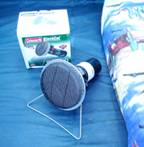 Coleman Black Cat Heater: Having a catalytic converter, the main benefit of this heater is that it's specially designed to be inside a tent (or trailer) as long as there is cross-ventilation. They usually take a standard sized propane tank which is relatively small and does a very good job of keeping you warm. I've been camping when a freak snow storm has hit and it was truly a life saver.
Coleman Black Cat Heater: Having a catalytic converter, the main benefit of this heater is that it's specially designed to be inside a tent (or trailer) as long as there is cross-ventilation. They usually take a standard sized propane tank which is relatively small and does a very good job of keeping you warm. I've been camping when a freak snow storm has hit and it was truly a life saver.
Boats and Fishing
Like some, I truly enjoy the sport of fishing and the art of gentle catch and release fly-fishing. On the other hand, nothing beats the taste of a freshly caught trout smothered in lemon and butter...YUM! For many years, I used a Sevlor inflatable kayak in in my airplane, which was great for one person and OK for two if at least one of them is small. I enjoyed fishing for my daily meal and quickly learned that the inflatables puncture quickly if you drag them on the ground, but repair easily. A downside of most small inflatables is that they're VERY sensitive to wind, do not steer well, and can be blown all over a lake from afternoon winds. Being 5' tall and only 97 pounds, I used leverage to maneuver items that were too heavy or awkward to carry. A rolling dolly worked well to transport the kayak, paddles, fishing gear and inflator down to the lake. art and
Since my kayak days, I've upgraded to boats a bit larger with motors.
This is my Mini-Flex which I use with a Honda BF 2.3 motor and I love it due to the size and weight. At about 50 pounds, I can still maneuver it and both the boat and motor fit easily into my airplane, Jeep or in the baggage compartment of my travel trailer. Check out my video review.
I have another new favorite boat which is larger and heavier, but for serious fishing, it just doesn't get any better. I was asked to test and review the SEA EAGLE Fish Skiff 16 the moment it became available and it passed my tests with flying colors. The boat rolls up and fits into most car mid-sized car trunks, but an SUV or truck would be better to fit the seats, canopy and motor as well. It’s an inflatable with the strength of a rigid hull and with three independent air chambers AND it is UNSINKABLE and self-bailing. You can easily fit two people and it slices through the water at up to 17 MPH. It can take up to a 6hp outboard motor or an electric motor, has non-flip deck padding and a built in 40” fish ruler. And the optional shade is great on hot days because it can be up or stowed flat. If interested, you can get the details at the link below and email me for a SkyChick coupon code to get the best price available:
https://www.seaeagle.com/InflatableFishingSkiffs/FSK16
And to see for yourself, this is a peek at that trip where I flew from Sacramento, CA to Columbia Airport, CA and brought with all of the boating equipment in my Cessna TU206 and caught this bad boy at Lake Melones. Since I mostly travel solo, I brought only one seat (shown in the video) and placed a gear-filled action packer in the front which I also used as a seat for fishing. It’s fantastic for trolling and I was able to easily slip into and out of small coves where the fish were biting!
Preparation is key.
Food Storage:
I often vacuum seal small portions of food for long trips. That eliminates the bulk of packaging and more important, it reduces the potential of odors that will attract bears and other hungry animals. I then place the food in one backpack that I can easily hang in a tree far away from the plane. The last thing I need is a bear ripping off my aircraft door. Besides, there is nothing stinkier than bear slobber all over your stuff.
To preserve food, this KoolerCap is my top pick for the most economical upgrade you can do. I discovered it at Overland West in 2018 and met the owner...very cool guy! I've used it several times since in both large and small coolers and and it kept my food amazingly cold the entire time. Watch the video and the physics behind it makes a lot of sense.
Protection
I use several forms of protection, but Counter Assault is a good deterrent for wild animals. However, you NEED to buy the special container, which they sell, that is specifically designed for transport of the spray in your airplane. It has foam to absorb the spray in the case of an accidental discharge which would certainly immobilize you. You can make our own or buy theirs, but I consider it a necessity.
Once you get there...now what?
You need transportation...I personally prefer motorized bikes because I cover a lot of territory and go back to home base at the end of the day. And I can go as fast or as slow as I wish, and power up hills with ease. I'll be adding a section on non-motorized bikes soon, but in the meantime, the Brompton brand was highly recommended by a fellow pilot. I'll share links and a video soon. This is the most compact and functional bike I've ever seen. They really thought of everything with this one.
Motorized Bikes
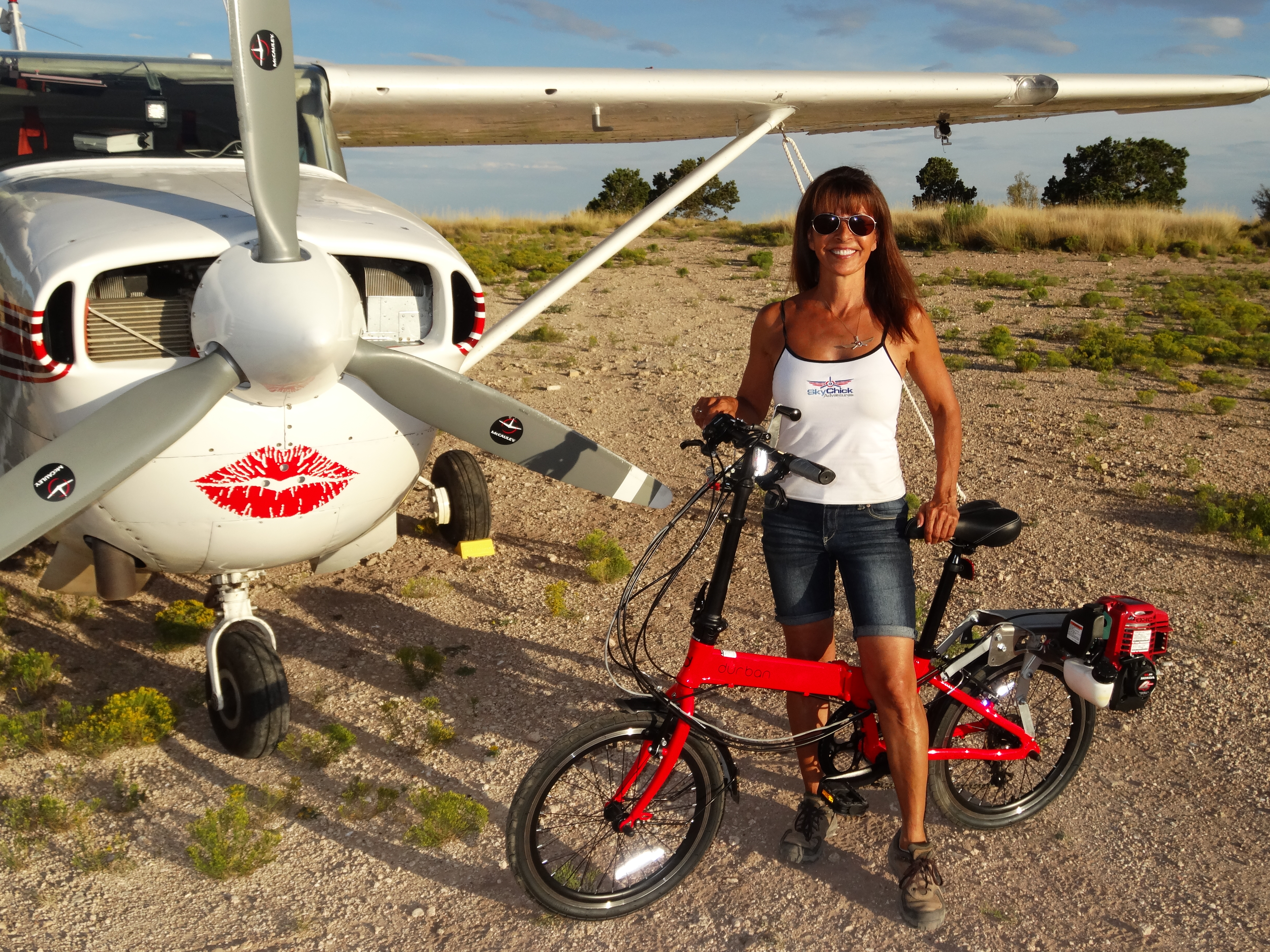
Dahon Motorized Bike...
If you land at airports outside of large cities, it's not uncommon to find no Uber or Taxi's. And even if they have them, why not have the freedom of going where you want to go, when you want to go. Using the bike on the left, I've landed and explored entire towns, and since it has a spark arrestor, I've used it on forestry land where motorized vehicles are allowed. Sure, you can use a regular bike, but at a consistent 25-30 MPH, you can cover a lot more territory. Fast, lightweight, folds up. Some planes can't carry a bike and in many cases you don't need one. But if you do, this one is the cat's meow. It's virtually a two-stroke motorcycle. Runs on regular gas OR AVGAS! Cruises at 35MPH. Below is my Durban Folding Bike with the new chain drive cruising along at 28 MPH.
I know there are some great electric bikes; but since I am either flying or driving off-the-grid, and don't want to have to wait hours for a charge, I prefer good old fuel and a regular two or four stroke motor (I've used both). I then either pull some car gas out of my tank or avgas out of my wing.
What I look for in a bike...
- Size: It needed to fold into the smallest compact size.
I use quick release pedals to save space as well.
- Speed: I wanted as much speed as possible and still maintaining stability. Both bikes can cruise between 28 - 35 MPH, which is fine considering the short wheel base.Powerful enough to cruise along at around 30MPH, fuel efficient and capable of running on both car and AVGAS, folding to reduce footprint in plane or camper, under 40 pounds.
- Fuel - Optimally I needed the motor to run on BOTH car and avgas. That way, I can pull fuel out of my wing and not carry it in a container.
NOTE: DO NOT FLY WITH IT FULL OF GAS! The gas expands as you climb and it will REALLY stink up your cabin and make you nauseous. My last bike got about 200 MPG on the flat. I'll be checking the new one and reporting on it. - Forestry Approved– The motor needed to be forestry approved. The ones I purchased always came with a spark arrestor or I added one since I use it in the forest where fire concerns are high.
- Weight: I prefer a bike that is under 40 pounds. My Dahon has a friction drive and weights about 40 pounds, which I can easily lift. I converted my Durban friction to a chain drive which increased the weight to about 55. Not thrilled about that, but love the bike and it's more stable on wet roads or gravel and it is much smoother to pedal when I am not using the motor, compared to the friction drive.
- Durability: It needed to handle very rough forestry roads without breaking. My previous bike (friction drive system) had hookworm tires which are supposed to be impervious to punctures, and I never got a flat. My current bike does not, so we will see how it goes with alternate tires.
- Utility: It needed to accommodate a big basket since I use it for hauling groceries, computers, towels, chairs…and everything else. The friction bike has a place on the back for the basket (which I prefer) and the chain drive bike has it in front since there was no alternative due to the configuration.
- Weatherproof: It had to provide decent performance in all weather AND mud. The chain drive outperforms the friction drive in weather.
It's the little comforts that count....
Call me wimpy, but I like a nice soft cushy seat. When riding 5 miles on gravel, you'll see what I mean. I use the basket to carry everything.Nothing beats a nice set of bungy cords. I have every size and they always come in handy for something.
Just For Air-Campers
Since weight is a big consideration for us, I will be including the weights for all of my suggested gear and am working on a revised air-camping checklist which I'll share with you once it's completed.
First and foremost, let's protect the plane. Oshkosh requires that parked aircraft use tiedowns. I've been there when a microburst hit and the severe winds and torrential downpour made the campground look like a war zone. Tents torn, flattened or blown down the runway, poles everywhere, sleeping bags soaked, everything that wasn't tied down had blown away. So tiedowns are a good idea.
Camping at the EAA AirVenture?Oshkosh requires that parked aircraft use tiedowns. I've been there when a microburst hit and the severe winds and torrential downpour made the campground look like a war zone. Tents torn, flattened or blown down the runway, poles everywhere, sleeping bags soaked, everything that wasn't tied down had blown away. So tiedowns are a good idea.
You don't really appreciate the value of a good tiedown until you see the result of using one that breaks or malfunctions. These photos are from a storm that hit Oshkosh which only had 35 kt winds. The aircraft sitting on TOP of the Bonanza was using "The Claw". You can decide for yourself, but that is a tiedown that I would NOT use for my aircraft. Both planes were totaled.
Shown above: All three of the claw tiedowns broke or ripped from the ground allowing one plane to flip and land on top of the other. What was left of the claw's was still attached to the wings or tail and the severed metal is shown on the ground. It may have been the claw, or possibly improper set-up by the user, what whatever the case, I am not a fan of that product.
Shown BELOW are the cream of the crop of tie-downs.
Fly-Ties are available at www.flyties.com
The T-shaped device is what you use to remove the stakes. It's been updated as shown above and is extremely effortless to use.
Fly-Ties are lightweight, come in a small pouch, have tremendous holding power are the best tie-downs available today. If I sound biased, it's because I am. I've used them for 16 years and regardless of the conditions, they have never failed me. The Fly-Ties kit includes tiedown rope, the stakes, pucks that the stakes slip into and a “T” bar to effortlessly remove them. Although the tie-down rope they include is OK, there are newer materials that are not as bulky and are equally strong or stronger. If interested, email me for the name and link.
I will be sharing lots more in the coming months on this website and through my social media channels so stay tuned, join in and please subscribe to get the most current information.
Happy camping!

